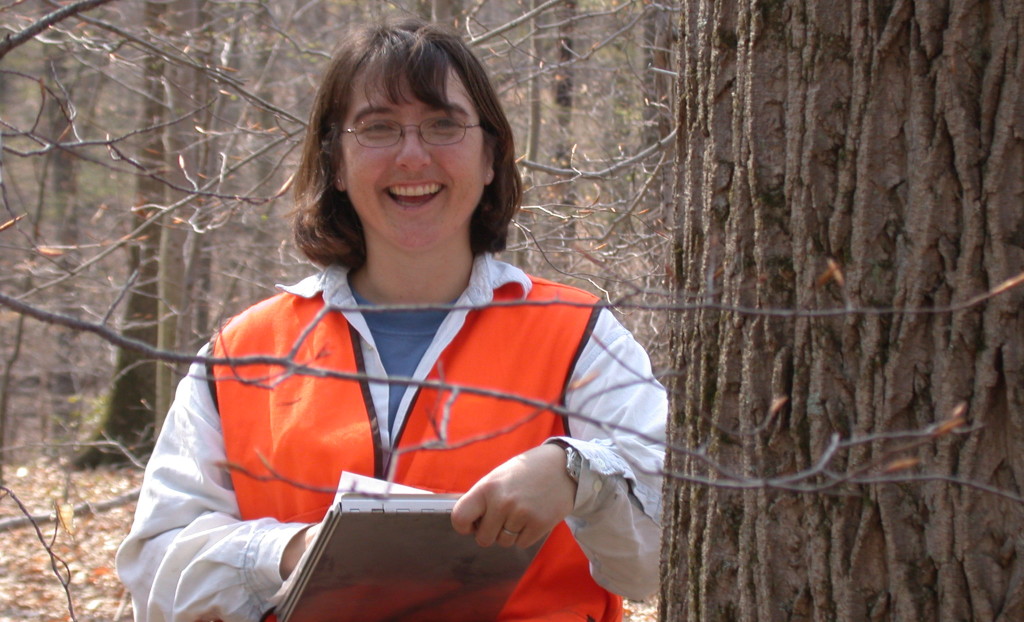
Ecologist Dawn Miller in SERC forest (SERC)
by Kristen Minogue
Friday is Earth Day, and this year it’s all about the trees. The Earth Day Network is on a mission to plant 7.8 billion trees in five years. Trees have enormous power when it comes to protecting the Earth. Scientists at the Smithsonian Environmental Research Center (SERC) have spent decades uncovering the environmental benefits of forests. But trees offer some advantages that are less obvious. Like acting as painkillers. Or improving your morning coffee. Since the holiday falls on April 22, we picked our top 22 things trees do for humanity.
The Environmental Perks:
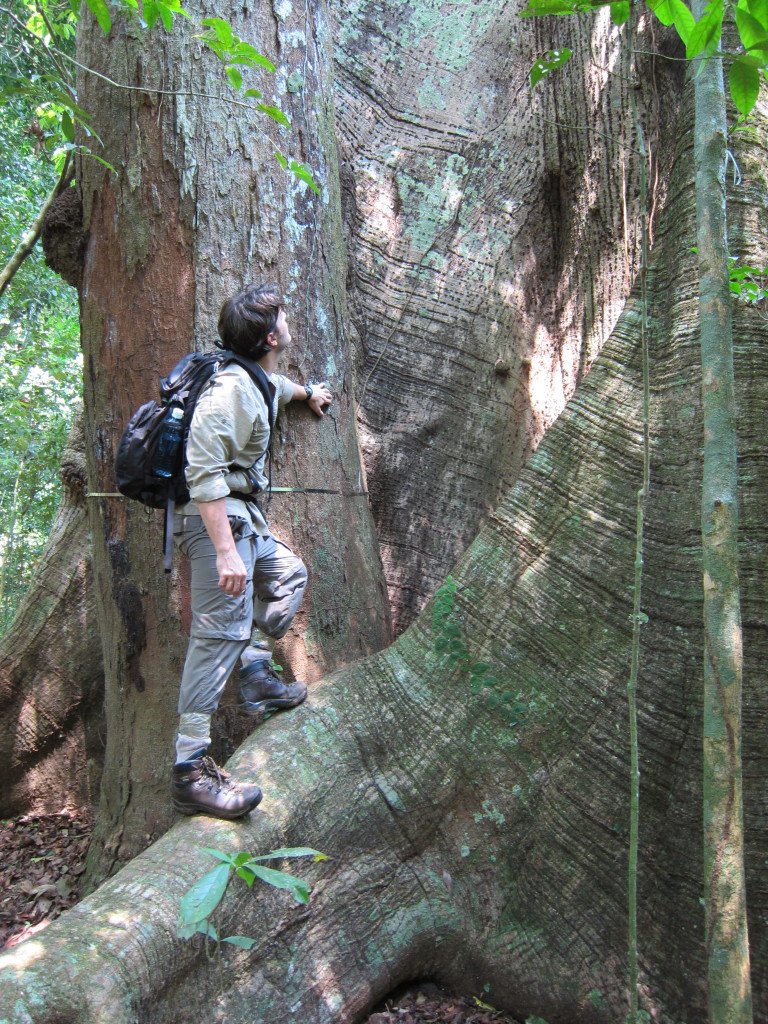
SERC ecologist John Parker beneath a kapok tree in Panama.
- Trees slow down climate change.
Little-known fact: Most of a tree’s biomass doesn’t come from the soil. It comes from the air, as it soaks up carbon dioxide and turns it into other forms of carbon. Estimates of how much carbon the world’s forests store range from 289 to 536 billion tons. That’s a good thing for us, since by pulling carbon dioxide from the atmosphere, trees reduce one of the most abundant greenhouse gases behind climate change. And this ability is only getting stronger, according to SERC research: In the last 20 years, trees have been growing two to four times faster than they have in the last two and a half centuries. - Trees protect species biodiversity.
Tropical forests cover less than 10 percent of the planet’s land, but they’re home to between 50 and 90 percent of its land species. Unfortunately, rampant deforestation means forests are losing species faster than any other ecosystem, according to the United Nations. - More biodiversity leads to…more coffee?
Helping forest species thrive has a host of benefits—including the survival of insects like bees that pollinate flowers. A study of a coffee farm in Costa Rica found that being within 1 kilometer of a forest increased coffee yields by 20 percent. It also improved quality by slashing the occurrence of “peaberries,” or small, misshapen coffee seeds. - Trees reduce stormwater pollution.
Forests act like planetary sponges for more things than carbon dioxide. In the 1980s, SERC scientists discovered streamside forests (a.k.a. riparian buffers) can intercept runoff from storms. In doing so, these forests filter out much of the excess nutrients and toxic chemicals from the water before they journey downstream. - Trees trap sediments.
Besides filtering out pollution, trees along streams or shores can also trap suspended sediments in the water. This has a double benefit, as it keeps excess sediment from clouding the water and helps stabilize the shoreline by building up soil. And speaking of keeping things stable… -
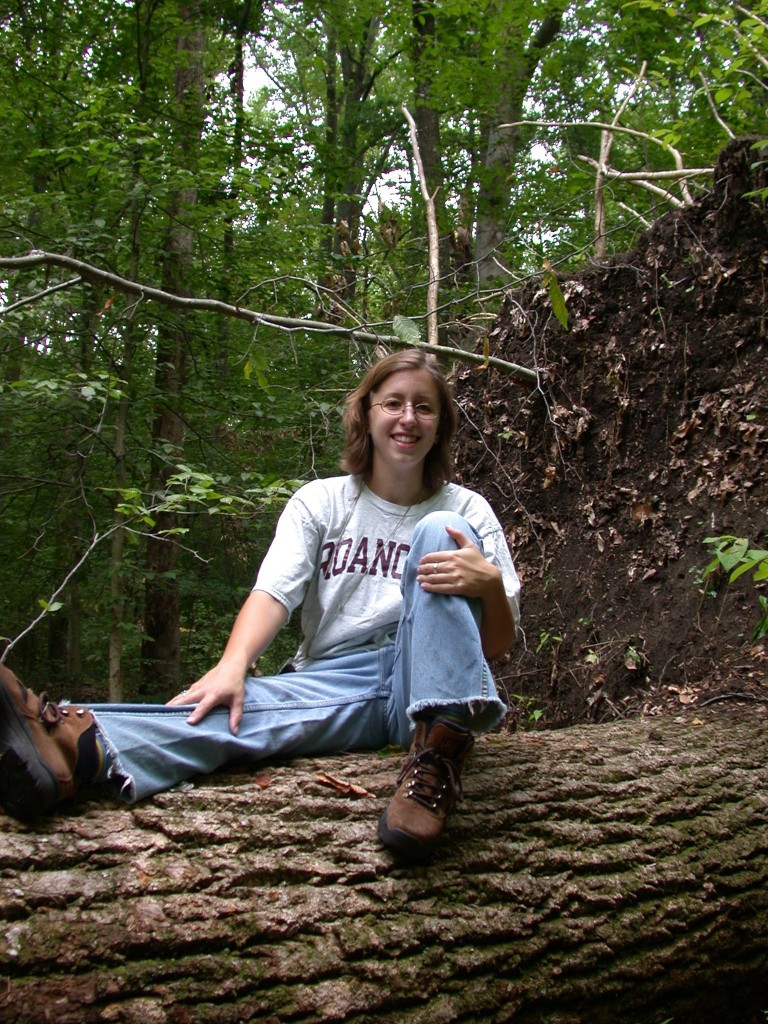
Tree roots help hold soil in place, slowing erosion and preventing landslides.
They also prevent landslides.
Trees help hold the soil in place, reducing the risk of disastrous landslides or a gradual wearing away of the landscape. In the tropics, soil erosion can be 10 to 20 times higher in areas where forests have been cleared out to make room for roads or other development. Another Ukraine study found that the health of a region’s soil was closely tied to how much forest cover it had. - Trees remove air pollution.
In U.S. cities, urban trees and shrubs remove over 700,000 tons of air pollution every year (worth about $3.8 billion). They do it largely via something called “dry deposition,” in which the trees take gas pollutants out of the atmosphere through the small openings on their leaves. Without trees, pollutants like sulfur dioxide and nitrous oxide could turn into acid rain. - Trees (sometimes) reduce ozone pollution.
Trees get mixed reviews for reducing ozone (O3), a gas that protects us from ultraviolet radiation but can cause breathing problems when emitted in the wrong places. Some trees emit the volatile organic compounds (VOCs) which can later create ozone. But in major cities, where cars and buildings emit plenty of ozone-forming chemicals already, trees can reduce ozone by pulling it out of the atmosphere once it’s formed or making other changes to the environment.When It’s All About the Economy: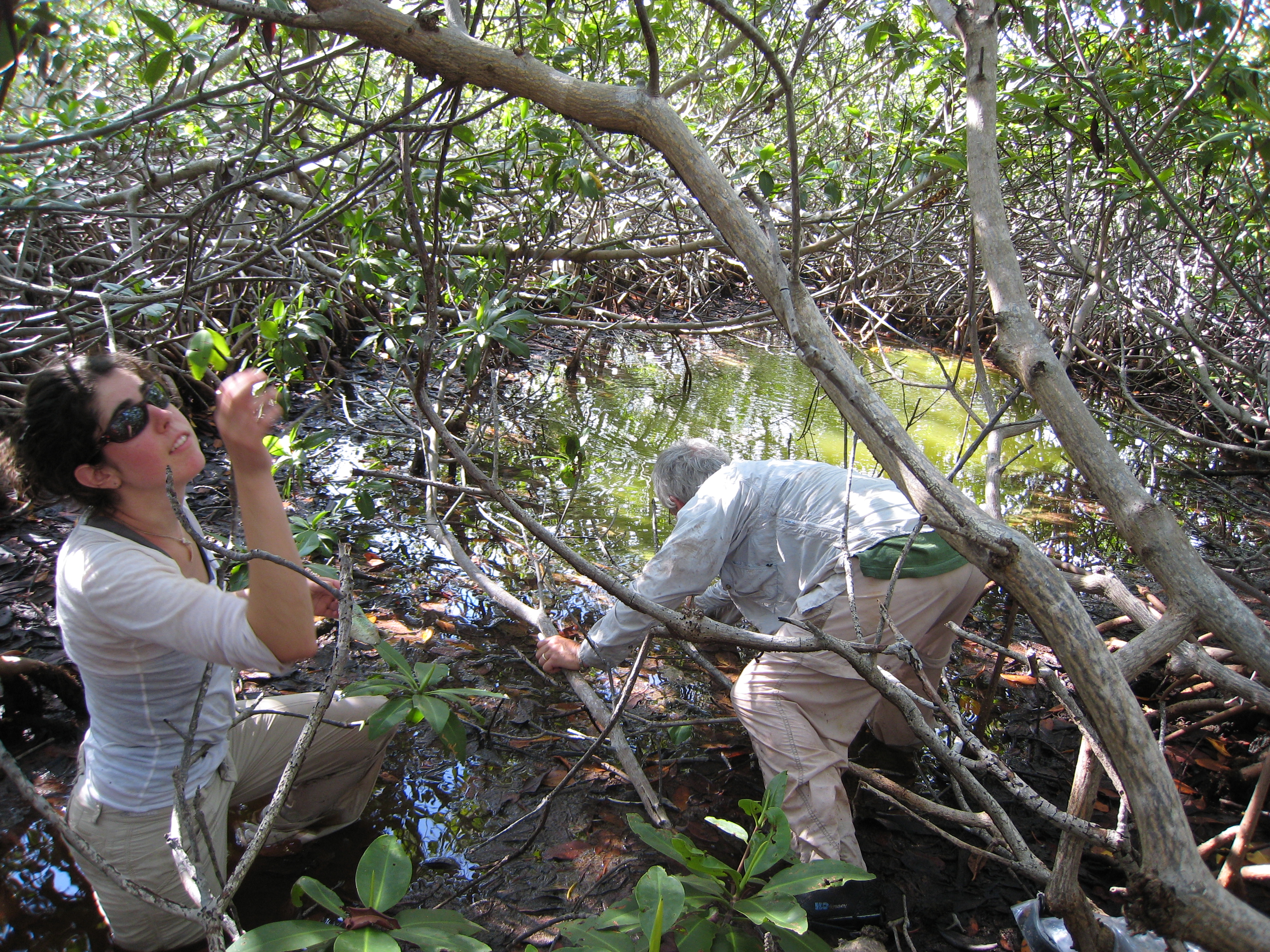
SERC ecologists study forests in Carrie Bow Cay, Belize
- Trees cut energy costs…
Having trees shade a building helps keep it cool during summer. One model from the United Kingdom predicted increasing a city’s green cover by 10 percent could lower surface temps by more than 2°Celsius (3.6°Fahrenheit). And the extra cooling pays off: A Chicago study discovered a single 25-foot tree could cut a person’s energy bill by 2 to 4 percent, and enough trees could cut costs by up to 35 percent. - …and increase real estate value.
The exact amount that trees can raise the value of a house is always open for debate. Estimates range from just under 1 percent for a single front-yard tree to six or 15 percent for general tree cover. But it’s generally agreed that a house with trees is more pleasant to look at than a house without them. - They’re good for business.
Stores are more likely to attract shoppers if they have trees nearby. A University of Washington survey found people rate not just stores, but the people and products inside them, more positively when there are trees in the streetscape. They’re also willing stay longer and possibly pay more, as they valued goods up to 12 percent higher in stores with trees. - They attract ecotourists.
“Ecotourism,” touring nature with the lightest possible environmental footprint, is growing roughly six times faster than the tourism industry as a whole, and many of the most popular destinations include forests. Environmentally minded tourists are also often willing to pay extra for a more sustainable experience. - They protect homes from strong winds and hurricanes.
After a storm, it’s common to see images of uprooted trees and smashed roofs. But in the right setting, trees can act as powerful windbreaks sheltering homes from the worst of the squall. To be effective shields, trees need to be planted in groups. Experts recommend planting a mix of conifers and deciduous trees. See this report for a list of some of the most wind-resistant species. - They protect parking lots.
Though trees are often sacrificed to make room for parking lots, keeping a few around can pay off in the long run. A California study found that shaded parking lots cracked less and needed less repaving over 30 years than unshaded ones. - They give us water.
Forests supply water to one third of the world’s 105 largest cities. Mountain forests are especially critical water sources. Cloud forests, high-altitude tropical forests blanketed by clouds even in the dry season, have an exceptional ability to capture water from the atmosphere. - They give us food.
There are the standard foods usually thought of in forests—fruits, vegetables, mushrooms and spices. But forests also shelter many of the animals we rely on for meat. Mangrove trees along the coast provide habitat for fish, shrimp and shellfish as well. - They give us medicine.
Forests plants have long been a staple of traditional medicine, which roughly three-quarters of people in the developing world rely on. In some African countries, traditional healers outnumber doctors of Western medicine 150 to 1. In modern medicine, forest plants have helped create medicines for heart disease, leukemia, HIV and several cancers. Which brings us to…How Trees Keep Us Healthy: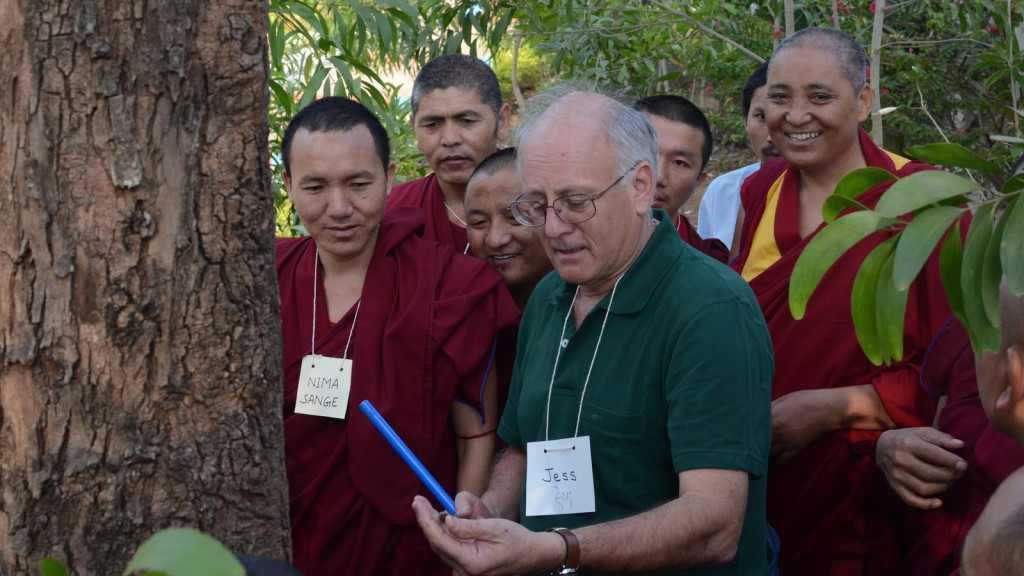
Ecologist Jess Parker with Tibetan Buddhist monks in India. (Bryce Johnson/Science for Monks)
- Trees reduce pain.
Since the 1980s, multiple studies have shown people who can see trees and other natural scenery report less pain than those facing a wall or an abstract image. Hospital patients request fewer painkillers and experience fewer headaches, sicknesses and other complications, and healthy people discover they’re better able to endure pain. - Trees protect us from UV.
Tree leaves absorb roughly 95 percent of the sun’s ultraviolet radiation (UV). Because excess UV exposure is linked to three kinds of skin cancer and cataracts in the eyes, spending more time beneath the trees can reduce the risk of needing surgery or other treatment later in life. - Trees prevent crime.
Since the Middle Ages, there’s been a prevailing notion that removing plants scares off criminals, since it deprives them of a place to hide. In 1285, King Edward I of England attempted to cut highway robbery by forbidding highways from having trees closer than 200 feet on either side. But a 2001 study looked at crime rates in almost 100 apartment buildings, and found the ones with greener surroundings reported fewer violent and non-violent crimes. The trend held even after they took into account size, number of apartments and vacancy. - Trees block noise pollution.
In the right spot, a row of trees and shrubs can muffle urban noise by 3 to 5 decibels, making an area up to 25 percent quieter as perceived by human ears. A denser row of mature trees can block as much sound as a highway barrier. - Forests fight poverty.
More than 1 billion people in the developing world depend on forests to survive, most in Africa and southern Asia. The remote or chronic poor can rely on forests for more than half of their livelihood, not for forests’ cash value, but for products like food, medicine, fuel and building materials. But forests can also help create ways out of chronic poverty. Forests can provide fodder for cattle or offer new crops households can gather or domesticate. Extra income from forests can allow families to send their children to school, or allow one family member to look for a higher-paying job in the city.


Joyce Kilmer had it right
I supportJoyce Kilmer
One tree is no tree. But taken in groups, trees are the catalyst for all that is environmentally good.–Tom Reilly, National Wildlife Federation
Read the young classic THE GIVING TREE! Poignant lesson, seed if you will, for diverse, forestry education for the young! One tree IS a tree be it a habitat both living and spent. Been practicing forestry management in my town and state since 1980 . . . wood, water, wildlife and passive recreation.
Here! Here!
Here! Here! Renewable, sustainable!
I was a logger once, until I could no longer bear it. Now I plant them whenever I can, wherever I can. When I win the lottery, I’m gonna buy fields and grow forests!
I love trees. I love “The Giving Tree”. I feel sad when trees are cut down for parking lots. I love “The General” and hope to see it someday in The National Forest. Our backyard has many trees for shade, for squirrels and birdsto live in, and for the humans of the house to appreciate. Go trees!
you left out they communicate with each other around
the world and if you listen they will talk to you…
it’s true…
AND THEY PROVIDE A HOME TO THE BIRDS AND MANY
OTHER SPECIES….
I love trees & it makes me sad when I see one being cut down. My house is surrounded by trees a lot of which I planted.
Am deeply inspired to read yr well researched notes, valuable indeed/.Thank you./It is legendary how the banian trees are village- centres in India giving shade, protection, bird life… /PS: During our sunset years at 90,me – wife moved into a Cottage-complex in the Chennaihomes, with trees and bushes around.And miraculously our health and welbeing have improved, also in communion with Nature !…/krishnans.
“Nothing is more beautiful than the loveliness of the woods before sunrise.”
-George Washington Carver
think a GREAT gov make-work “Neo-WPA” project would be to REPLANT much of the forests that our ancestors have decimated….for all of the reasons listed here….
I am extremely happy that I checked out my newsletter!! There were several reasons I did not know about trees. I find it very interesting! i even posted it on Twitter. Thank you for sharing all the wonderful news with me!!
Clicking on the link for the report referred to in Reason #13 produced the response that the request is syntactically incorrect. Would it be possible for someone at the Smithsonian to correct it so that the report can be accessed? Thank you.
Thanks for letting us know, Violet – I’m sorry the link wasn’t letting you access the report! The link worked in the browsers we tested, but we’ve inserted a new link to the same report just in case. You can also try accessing it from this link here: http://edis.ifas.ufl.edu/pdffiles/FR/FR17300.pdf
The report is in pdf format, and the list begins on page 5.
I enjoy our rain forest!